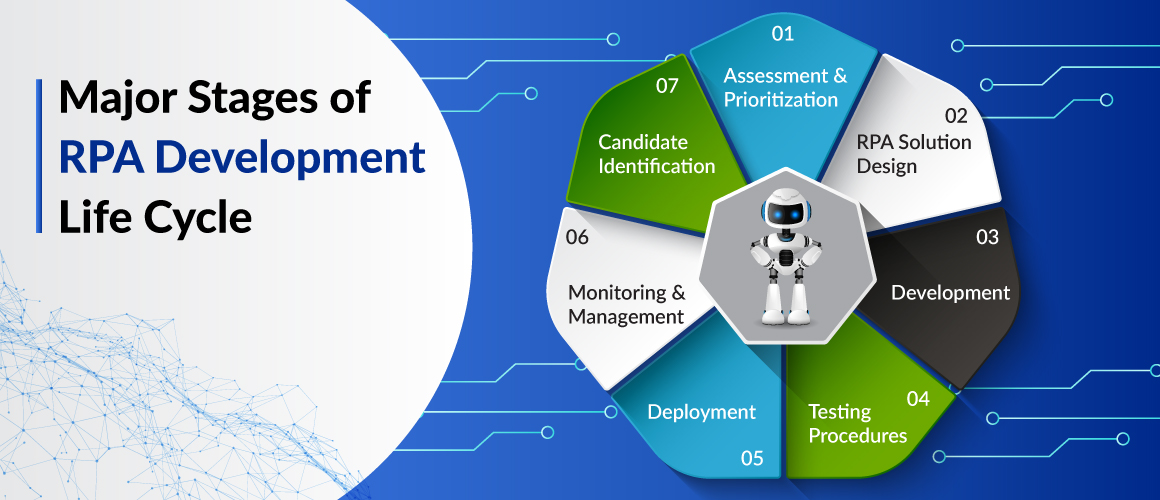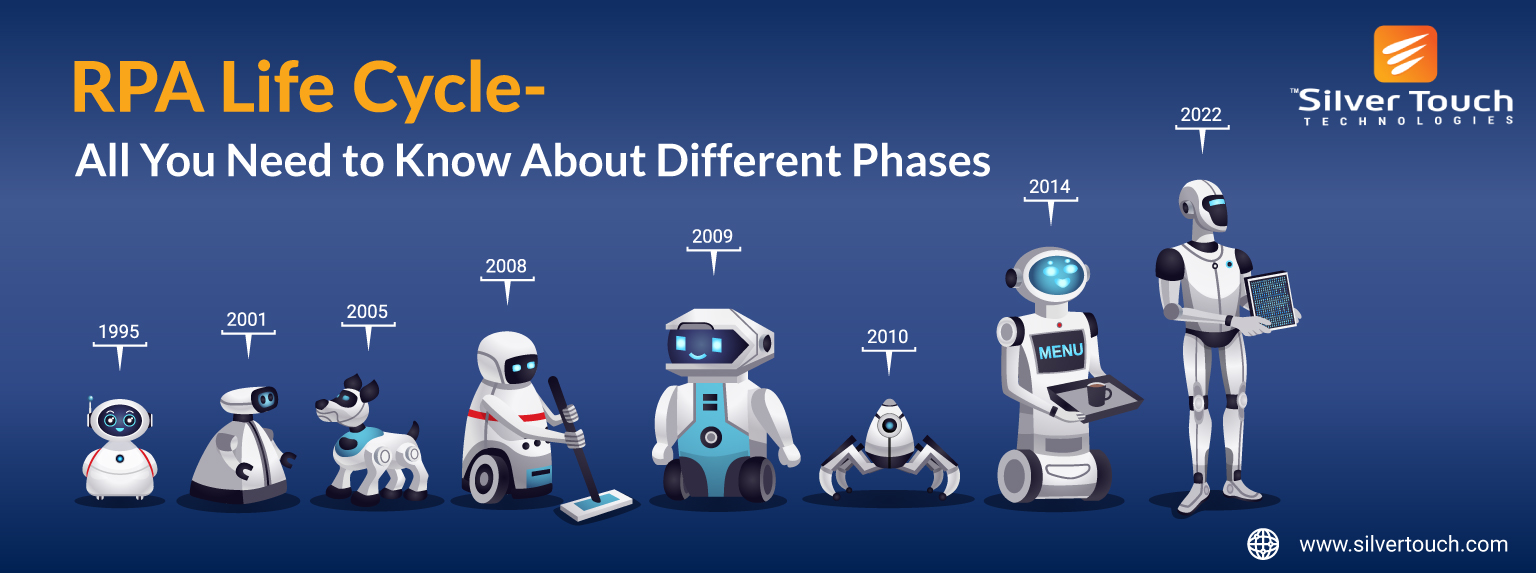The Robotic Process Automation (RPA) concept has already crossed its nascent stage as many enterprises have integrated it into existing business systems. These days, entrepreneurs focus on RPA lifecycle management to make the most from the RPA integration. It can help them achieve the full value of the potential of RPA solutions simply by maximizing the resilience for both remote and in-office workforce.
Managing the RPA development lifecycle is a complex process. It is imperative to examine and manage the bot during different RPA life cycle stages. Also, it is necessary to eliminate sub-optimal or substandard practices to prevent the bot’s failure. In this post, we will going through the best practices for RPA lifecycle management. But, before moving ahead, let us understand what RPA development life cycle is and define all its phases.
Brief Introduction of RPA Lifecycle Management
The RPA lifecycle is the structure that shows the way automation is delivered and executed for the given process. It consists of different phases ranging from identifying the tasks for automation to deployment of a customized bot and its continuous monitoring.
Similar to this, RPA lifecycle management involves managing every stage of a bot’s life. It is useful in ensuring that the RPA bot delivers the business value as per the expectation. Simply put, RPA lifecycle management offers a seamless process automation while ensuring that the bot fulfills its requirements effectively. Also, companies can get a segmented process to ensure that all the RPA life cycle phases can be assessed and improved if necessary to enhance the overall performance.
Major Stages of RPA Development Life Cycle

We can segregate RPA lifecycle into seven stages. Here are all these stages.
1. Candidate Identification
Here, stakeholders and RPA professionals identify key business processes or tasks that can be automated. This initial phase is accomplished with the help of process discovery and task mining. Process mining tools can also be used to define candidates efficiently.
2. Assessment & Prioritization
In this phase, all the processes and tasks identified as automation candidates are assessed thoroughly. The assessment also involves technical feasibility, complexity, and dependency measurement. This assessment leads to prioritization for design and development of bots.
The assessment of potential automation candidates also includes the measurement of business value. It is about finding whether it is a high-volume or frequent task or process. Also, it is also found out whether these tasks are prone to errors when performed manually.
Prioritization is a process to implement automation into the design and development pipeline. It is normally managed as per the necessary effort and the potential business value of automated processes.
3. RPA Solution Design
Design is one of the crucial stage in the RPA development life cycle. It involves both defining and modelling the actual process or tasks that are ready for automation and finding dependencies for the process.
4. Development
In this RPA lifecycle phase, RPA developers build the customized bot in the studio. This phase enables RPA solution providers to come up with the bots in line with requirements and strategy decided in the design phase.
Here, it is fair to mention that using a paper-based document may not be an optimal solution. Traditionally, the software design and delivery process was based on big BRDs (Business Requirement Document), but this method was proven to be ineffective.
5. Testing Procedures
Here, the RPA developers or QA executives test the automated process in a specific testing environment. It is necessary to ensure that the entire process is executed and performed as per the expectations.
6. Deployment
After testing, the bot is deployed in the production stage and starts working as per the configuration in the orchestrator of the RPA tool. This phase needs careful execution and monitoring for seamless performance of the bot.
7. Monitoring & Management
This is a final stage of RPA lifecycle management. Here, you need to monitor the bot on a continuous basis for performance assessment and seamless operations. You can take the help of a reputed RPA solution development company for managing the entire RPA life cycle.
You May Also Like: Effective Tips to Implement RPA Services for Your Workplace
Importance of RPA Lifecycle Management for Your Enterprise
RPA is here to stay and entrepreneurs tend to leverage its benefits in the coming time. RPA software is designed to work on the top of other software. When it comes to the tailored bot’s functionality, we can say that every bot is capable of multiple interactions with different systems at once.
Every RPA development lifecycle phase impacts the bot’s uptime and contributes to delivering the business value. Though RPA solutions face many challenges related to data security and regulations, they can take modern enterprises to a new level. Many shortcomings of RPA programs are due to suboptimal practices in RPA lifecycle stages. A reliable and experienced RPA solution provider can assist you to get rid of these shortcomings while integrating bots in the existing business system.
Effective integration of tailored bots can work on a 24x7x365 to increase efficiency and productivity of the company. Improved uptime, high competitiveness, and greater returns of investment (ROI) are some of the obvious benefits of right RPA solutions and proper RPA lifecycle management practices.
How Silver Touch Improves RPA Lifecycle Management
We, at Silver Touch, assist global enterprises with high-quality bots. Our experienced RPA developers take care of every aspect to implement automation with the utmost precision. We ensure that our clients can get customized bots with seamless performance in a short time and with a 50 percent decrease in errors. Altogether, you can improve services and customer experience through seamless automation using the RPA lifecycle management. Do you want to know more about our RPA services and solutions? Simply drop us a line at info@silvertouch.com. Our experienced business consultants will contact you soon.



